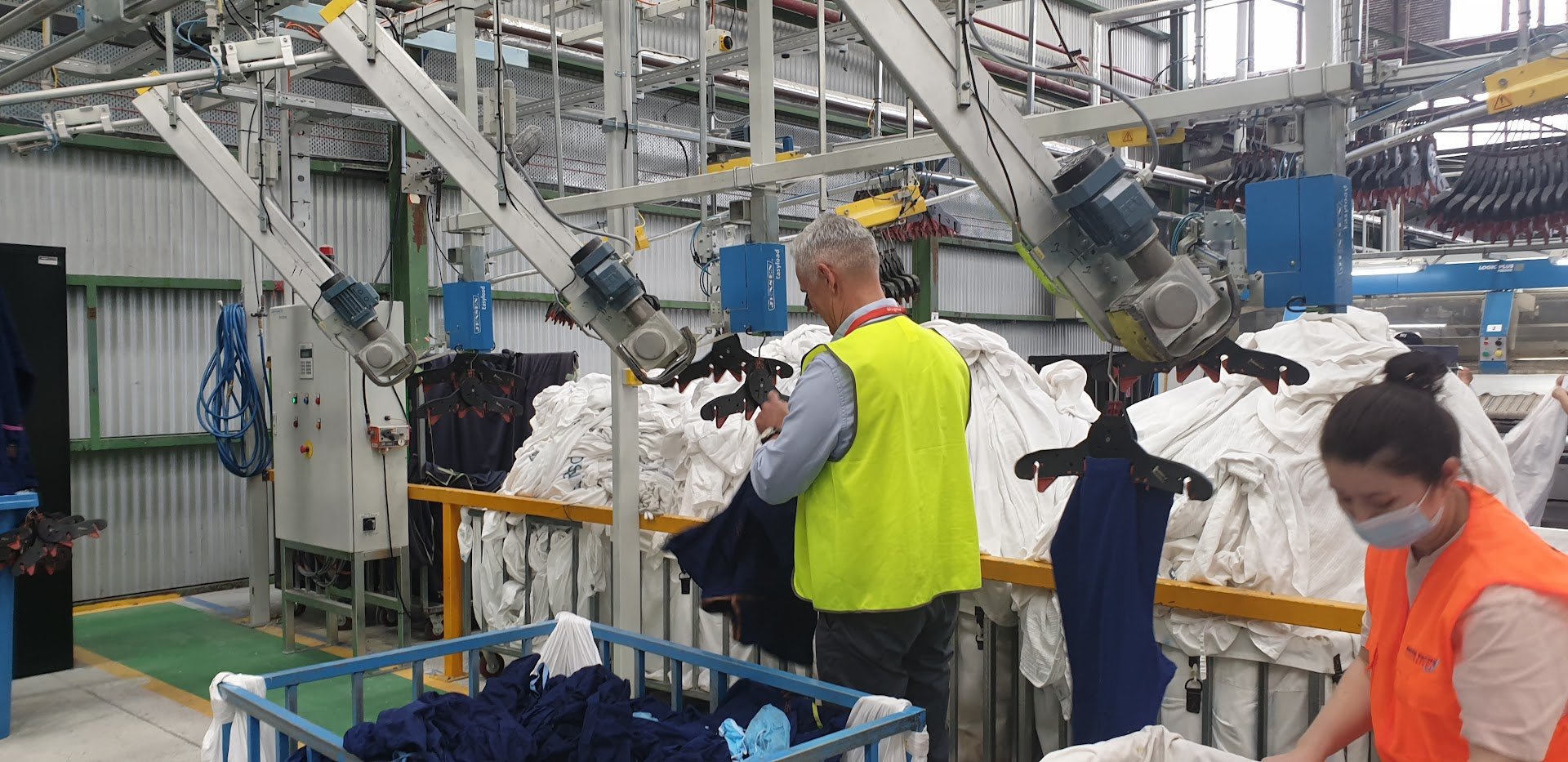
Laundry Sector in Australia
The laundry sector in Australia is:
A $1.2 Billion industry
500 Businesses & even more laundromats
Employs around 13,500 people
State & Territory Sector Share
Scope of the Sector
The laundry sector includes commercial laundries, industrial laundries, public sector laundries, On Premise Laundries (OPL), a range of laundries capable of sustaining commercial customer service delivery and laundromats, supported by a range of critical supply chain businesses that provide machinery, textiles, technologically advanced hardware and software, and other goods/services.
Laundries provide hygienic cleaning services for businesses such as hotels, aged care, AirBnBs, function centres, hospitals, clinics, surgeries, spas, food preparation and a range of other organisations. That support can be under contracts and/or temporary arrangements or provided by an OPL to the business.
The sector is guided by the Australian Standard for Laundry Practice (AS 4146) which establishes practices that ensure textiles and materiel is hygienically cleaned and satisfies health and accommodation expectations.
Jobs in the Sector
The laundry sector employs a large number of people and in a big commercial laundry it is not unusual for a shift to include over 100 people, while at a laundromat there may be one or none at those premises. A commercial laundry can clean in excess of 100 tonnes of laundry a day, and to achieve those volumes, businesses operate a range of highly efficient and increasingly automated machines. Continuous Batch Washers, ironers and folders are some of the highly efficient machines that need to be operated and maintained.
Across a commercial laundry’s operations, some of the roles in addition to the operators of the machinery include sorters, sewers, forklift operators, drivers, administrators and a range of other roles. While there are training courses at the Certificate 2 & 3 levels, a number of roles are essentially unskilled and new team members will receive on the job training, and subsequent development opportunities, with the opportunity to advance into different roles both ‘on the floor’; and elsewhere in the operations of the business.
Laundries can be hot and noisy, however plans are in place to deal with the heat and PPE is provided. Good staff are highly valued in the sector and above award pay and access to penalty rates are common across the sector, as are opportunities for flexible working arrangements.
Those interested in employment should contact their local commercial laundry or laundromat business directly.
Development of Laundries in Australia
The information below has been obtained from the website of the Old Treasury Building Museum in Victoria, click here to go to their website for further information.
The decline of the washerwoman and the rise of the commercial laundry
The ‘poor washerwoman’ was a common stereotype in nineteenth and early-twentieth century Melbourne. She appeared in fiction, in newspaper articles and on the stage, generally depicted as a large, brawny matron. Since washing every day probably developed strong muscles in the arms and shoulders, this may well have been an accurate depiction. But as the twentieth century progressed, washerwomen were harder to find. Newspaper articles in the 1920s and 1930s bemoaned the shortage of washerwomen, implying that finding a ‘good, old-fashioned washerwoman’ was almost impossible.
Commercial laundries stepped into the breach. The demand for laundry services saw an increasing number of commercial laundries established in the late-nineteenth and early-twentieth centuries. In the 1890s many were run by Chinese men, as discriminatory legislation closed other employment options to them. Others just saw a business opportunity. Prince’s laundry was one example. It began in 1905 as a small concern, operating from John Prince’s home in Mentone. In 1920 he expanded into larger premises in Warrigal Road, employing many local women. His son continued the business, building a new factory on the site in the 1930s. Laundries also operated in convents, industrial schools and women’s prisons, using the free labour of inmates. Commercial laundries serviced hotels and boarding houses, but some middle-class households also began to send their larger items, like sheets and tablecloths, to the laundry, lightening the load on the housewife.
Keeping clean in ‘the slums’
Hard as wash day could be in comfortable households, it was an even greater struggle for the poor. In many inner-Melbourne suburbs laundries were often makeshift, lean-to structures tacked onto the back of houses, if they existed at all. This continued to be the case into the 1930s and forties, despite attempts to improve so-called ‘slum’ housing. ‘open-air wash houses’ could include a galvanized iron tub, with scrubbing clothes by hand. They could also include a copper or wringer and a clothesline, often attached to the house in an improvised manner.
The washing machine
Although rudimentary washing machines were invented in the nineteenth century and were used in some households in Australia, the laundry copper with rinsing tubs was the most common laundry equipment until after the Second World War. Even middle-class households did not always buy a washing machine until the 1950s, but then they spread rapidly. The first models were designed to work alongside existing laundry troughs and were generally used only for washing. The clothes were then passed through the attached ringer into successive troughs of cold water for rinsing. Positioning the machine alongside each trough allowed the clothes to be passed through the ringer after each rinse. This arrangement also assured that wash water was re-used for successive loads, beginning with the whites and ending with the dirtiest clothing, or cleaning cloths. Water was often still heated for the machine in an adjacent copper. It was an arrangement that used far less water than today’s washing practices, but it did mean that the washing was done in an extended, single session. ‘Washday Monday’ was a long-established tradition that continued well into the 1950s.
This information has been supplied courtesy of the Old Treasury Building Museum in Victoria, click here to go to their website for further information.
